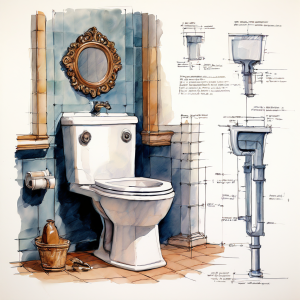Constructing with Confidence
Creating an eye-catching landscape takes more than just a green thumb. It’s a form of art that requires patience, creativity, and an understanding of natural elements. One such element is the humble rock. These sturdy staples of nature can transform your backyard from a simple garden into a natural wonderland. But how does one incorporate rocks into a landscape design effectively?
One popular method is by gluing them together to create unique, beautiful, and durable formations. This might sound challenging, especially for beginners, but with the right approach, it’s a task that anyone can master.
The Cornerstone of Creation
The first step to successfully incorporating rocks into your landscaping is to pick the right ones. Consider the size, shape, and color of the rocks that would best suit your design. Remember, they should complement the other elements in your yard and reflect the overall aesthetic you’re aiming for.
Once you’ve chosen the perfect rocks, it’s time to prepare them. They need to be clean and dry before you proceed. A simple wash with soap and water should do the trick, but ensure they are thoroughly dried afterwards. This will ensure the adhesive sticks well, creating a strong bond between the rocks.
The Glue That Holds Everything Together
When it comes to the adhesive, you need something strong, durable, and weather-resistant. After all, your rock formations will be exposed to various weather conditions. Select a glue that is designed for outdoor use and can withstand the elements. Also, ensure it’s compatible with the type of rocks you’ve chosen.
Once you’ve got your glue, apply it carefully to the rocks. You want a generous amount, but not so much that it spills out from between the rocks. Think of it like frosting a cake. Too much frosting overwhelms the cake, but too little leaves it dry.
After applying the adhesive, press the rocks together firmly and hold them in place until the glue starts to set. This is a crucial part of the process. The rocks moving around before the glue dries can weaken the bond.
Putting It All Together
Now that you know how to glue landscape rocks together, it’s time to let your creativity shine. Arrange your rocks in the design you’ve envisioned, whether that’s a charming rock garden, a sturdy retaining wall, or a decorative border around your flower beds.
Remember to be patient during this step. The glue needs time to cure, which can vary depending on the adhesive you choose. While waiting, you can start planning the next steps of your landscaping project.
The Finishing Touches
Once the glue has fully cured, you can add the finishing touches to your rock formations. This could involve filling in any gaps with smaller rocks or pebbles, painting the rocks to enhance their natural colors, or even adding decorative elements like fairy lights or garden gnomes.
If you’ve created a rock garden, consider planting hardy plants like succulents or alpine flowers that thrive in rocky environments. If you’ve built a rock wall, it could serve as a backdrop for a waterfall or a vertical garden.
The Last Pebble
Creating a rock formation for your landscape is like building a miniature mountain range in your backyard. It’s a task that requires time, patience, and a bit of elbow grease. But the end result is a stunning, natural feature that adds character and charm to your outdoor space. With these tips, you’re well-equipped to embark on this rock-solid adventure in landscaping. So, grab your glue, gather your rocks, and get ready to create something truly spectacular!



